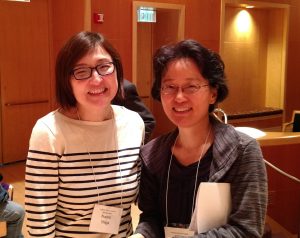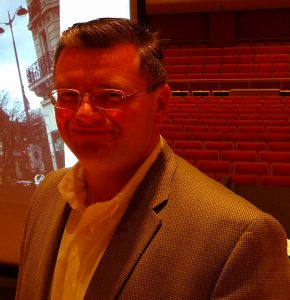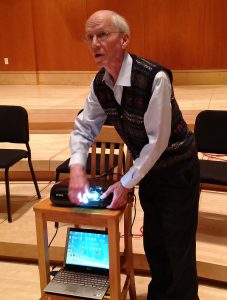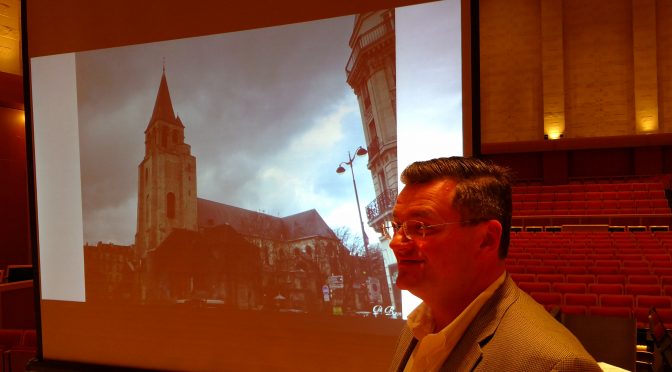On March 13, Tacoma AGO members gathered at Pacific Lutheran University for our monthly meeting featuring Paul Thornock discussing organ works of Augustin Barié (1883 – 1915) and, in particular, the significance of Symphonie, Opus 5 in the development of cyclisism in organ composition.

Following an introduction by Subdean and Program Chair Una Hwang, Dr. Thornock began his discussion by highlighting the importance of Barié’s musical innovations. Barié, blind from birth, attended the Paris Conservatory, where he studied with Vierne and Guilmant, and subsequently established himself as a teacher and performer. Prior to Barié, organ symphonies had consisted of individual movements, often unrelated. Barié’s works employed transformation of a cyclical theme, achieved by changing the intervals or rhythm of the original idea, thus unifying the movements.

As the audience followed along in the score, Dr. Thornock used Opus 5 to demonstrate how Barié introduced and developed themes using changes in intervals, rhythm, and keys. These techniques were subsequently incorporated by Barié’s contemporaries.
Interestingly, Barié’s instructions often call for duplicate registration changes, possibly a result of his inability to proofread his scores. He also regularly asks for stops not available on the organ at St. Germain-des-Prés in Paris, where he was organist. It is not known whether he was thinking of a larger organ he had played, or whether he might have been imagining an ideal organ.
Following the musical analysis, the audience was treated as Dr. Thornock performed Opus 5 on the Paul Fritts organ in Lagerquist Hall.

Thanks to Past Dean Mark Brombaugh for providing audio-visual support.

